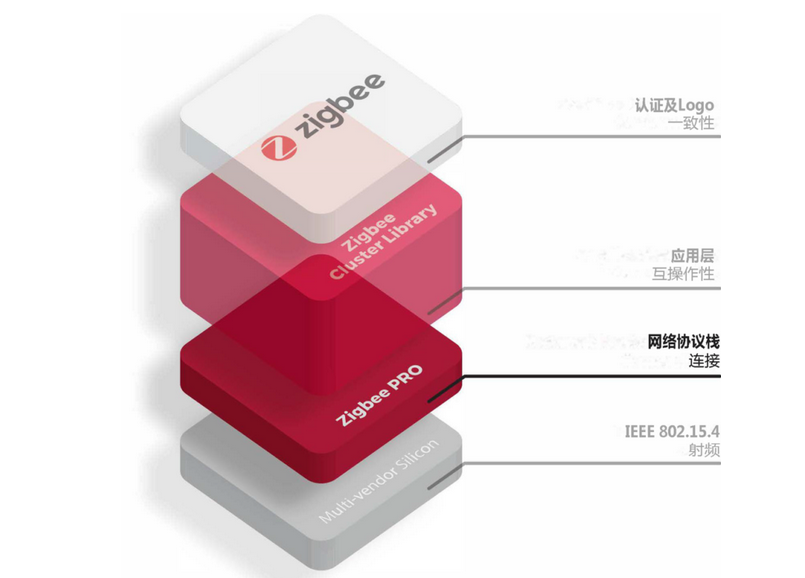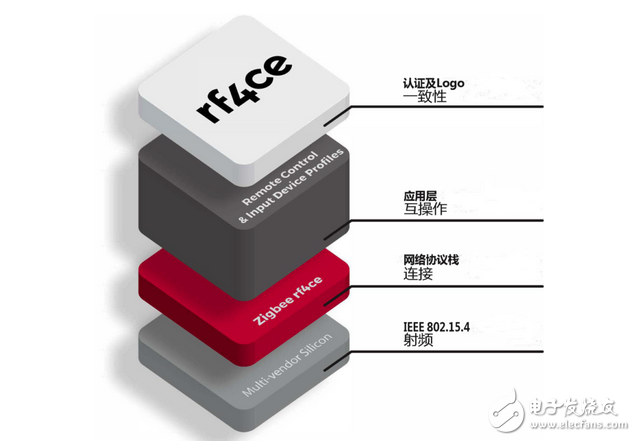Zigbee pro can be said to be an upgraded version of zigbee protocol. It has many enhanced functions, such as alternate addressing, many-to-one routing, higher security performance, etc. In addition, it can actually support far more network nodes than old ones. The version of the zigbee protocol is closer to commercial applications.

Zigbee PRO features
Multi-band, supports 2.4GHz and sub-GHz cross-band communication.
Use the global 2.4GHz frequency band based on IEEE 802.15.4.
915Mhz and 868Mhz frequency bands suitable for specific areas.
The frequency agile solution applies to 16 channels in the 2.4GHz frequency band and 90 channels in the sub-GHz frequency band.
It has a power saving mechanism applicable to all device categories and supports passive devices.
It has a discovery mechanism confirmed by the application layer.
Equipped with a pairing mechanism confirmed by the application layer.
Mesh topology and personal area network (PAN) communication.
Multiple transmission options, including broadcast, multicast and unicast.
Security key generation mechanism.
Adopt industry standard AES-128 security scheme.
Support alliance standards or manufacturer private agreements.
The power measurement function is included to reduce the power output so that the device can accurately communicate at the required power level.
The transmission distance of Sub-GHz channel can reach 1 km.
RF4CERF4CE is a new generation of home appliance remote control solutions standards and protocols, where RF stands for Radio Frequency, 4 stands for "for" (four homophonic), and CE stands for Consumer Electronics.
In order to popularize radio frequency control technology in the home appliance market and avoid the introduction of new technologies as an obstacle to product design, the RF4CE (Radio Frequency for Consumer Electronics) Consortium (RF4CE Consortium) was established in 2008. In March 2009, the RF4CE Alliance agreed to cooperate with the ZigBee Alliance (ZigBee Alliance) to jointly develop a new radio frequency standard based on ZigBee/IEEE 802.15.4 and used for remote control of Home Appliances. Since then, radio frequency remote control is finally expected to completely replace traditional infrared technology. RF4CE can not only improve the reliability of operation; increase the transmission distance and anti-interference of the signal; make the signal transmission not affected by obstacles; it can also realize two-way communication and solve the interoperability problem of different electrical appliances. The battery life of the remote control can also be significantly extended. . Consumers will no longer need to use the transmitter of the remote control to accurately point to the receiving end of the appliance, and will no longer need several remote controls to operate different electronic devices in the home.

Advantages of RF4CE
1. Convenient and easy to use
Standardized commands mean that manufacturers do not need to develop a general infrared (IR) command database or pay expensive license fees for them, and consumers no longer need multiple remote controls, because the commands are the same and all devices can understand;
Eliminate the limitation of having to be in the visible range and extend the control to a greater distance
Two-way high-speed communication enables manufacturers to better control data transmission speed and realize new user functions
With anti-interference function, so that consumers can place the product almost anywhere
Able to achieve rapid implementation and update, which means that manufacturers can shorten the development time of applications, and consumers do not need to relearn in order to understand new technologies
Supports remote positioning, has various transmission options, and communication is faster and more reliable. These features bring a more convenient consumer experience
Over-the-air upgrade (OTA) function means that manufacturers can upgrade the firmware and add new functions even after the product is shipped
2. Reliable and robust
Can be used in all countries in the world
According to IEEE 802.15.4 standard, work in 2.4GHz frequency band
The frequency agility solution can run dynamically on three channels
Can continue to send commands until it is confirmed that the command has been received, and the response time is faster than infrared
Provide enhanced user interface, including touch screen or extended pointing control function
3. Interoperable
Support standards or manufacturer-specific configurations established by the Zigbee Alliance
Allows the addition of standards or vendor-specific profiles to achieve true interoperability between vendors’ own products
4. Green and environmental protection
Energy saving mechanism has been added for all equipment categories
Extend battery life and reduce environmental waste
Consumes less energy than infrared solutions
From the bottom level, both zigbee and RF4CE protocols follow the 802.15.4 specification. The main difference is that the purpose of the application is different. Zigbee is mainly for wireless sensor networks, and dynamic networking is the main feature; while RF4CE is only for The control of home appliances, relatively speaking, the network function is not as strong as zigbee, but the resources required are much smaller. On zigbee pro, you can develop project applications according to your own needs, but rf5ce is not the same, he specializes in the consumer electronics market and makes remote control applications. Specifically, the network structure of RF4CE is mainly one-to-one and one-to-many, which is much simpler than zigbee.
New Products
SHENZHEN CHONDEKUAI TECHNOLOGY CO.LTD , https://www.szsiheyi.com